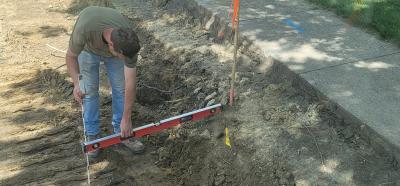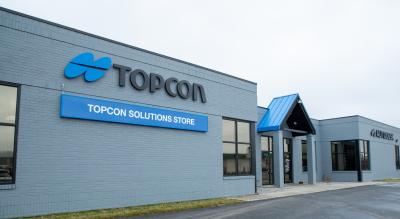Nearly 25,000 hardy souls braved Pittsburgh, PA’s cold this Feb. 11 to watch, hopefully without blinking, as one of the city’s most recognizable landmarks was reduced to a pile of rubble in just 19 seconds.
That’s how long it took for Controlled Demolition Incorporated (CDI) of Phoenix, MD, subcontractor to Bianchi Trison Corp. of Syracuse, NY, to implode the 30-year-old Three Rivers Stadium.
Of course it took much longer than that to plan the demolition. But according to Bianchi Trison’s Operations Manager Richard Stern, it was a picture perfect demo job.
Game Delayed
Though the project came off without a hitch, it posed a number of logistical and structural problems that delayed the demo date by several weeks.
First, the new football stadium, which is partially constructed, is just 80 ft. (24 m) at the closest point from the west wall of Three Rivers.
Then, the contractor discovered that the stadium was actually much sturdier than they originally estimated from project drawings.
The more-or-less baseball-shaped stadium had four switchback exit ramps, which Bianchi intended to dismantle through traditional methods, such as a wrecking ball. They then expected to implode the main stadium structure.
As Bianchi crews got further into the demolition project, however, they realized that the ramps were integral to the structure and that the builders had used more rebar in its construction than the drawings indicated.
So the $5.1-million implosion project, originally slated for Super Bowl Sunday, was moved to mid-February so that engineers could re-calculate the demolition process.
A Blowout
In the end, workers drilled about 2,500 holes throughout the support columns on the stadium, which were loaded with 4,800 lbs. (2,160 kg) of explosives. The columns were then wrapped in geotextile fabric and covered in chain link fencing.
This wrapping served two purposes: It prevented flying debris and it helped strengthen the columns so that the explosion had more force.
Finally, to protect the as-yet-unnamed new stadium from flying debris, it too was covered with geotextile fabric.
Since the ramps couldn’t be removed before the explosion, cables were wired from the west ramp, closest to the new stadium, to the opposite side of Three Rivers. Experts reasoned that if the explosion was started in that ramp, then the cables would hold the ramp rigid until it could fall toward the middle.
That’s exactly what happened.
The implosion started on the west wall and then, through a series of 16 explosions, dominoed counterclockwise. In the end, debris flew about 40 ft. (12 m) toward the new stadium and the rest of it settled into the dust.
The Dust Settles
For most Pittsburghers, once the gritty concrete dust had settled just a few minutes later, it was over. But for those at ground zero, the cleanup was just beginning.
Bianchi Trison brought its own equipment and leased several additional pieces from Anderson Equipment Company based in Bridgeville, PA.
The largest, a Komatsu PC1000 excavator, Anderson’s “Big Daddy,” had to be shipped in three different pieces and re-assembled on site. It was outfitted with a 7.5-cu. yd. (5.7 cu m) bucket for moving large volumes of material at one time. Anderson’s “Bad Boy” and “Bad Girl” excavators, Komatsu PC750s, were fitted with grapples and universal processors for breaking up the larger pieces of structural steel and concrete.
Anderson also provided some smaller Komatsu PC300s for general cleanup work. And, in addition to equipment, Anderson has mechanics and a parts trailer on site.
Interestingly, there’s nary a wrecking ball, however. With the fittings now available, backhoes and excavators are replacing the dangerous wrecking ball as the demo tool of choice, according to Bianchi’s Stern.
“The use of backhoe/excavators has become a major tool to use for demolitions,” Stern said. “It’s a lot more efficient and precise, compared to the stereotypical wrecking ball. Plus, it’s getting harder and harder to find [qualified] operators who can use the wrecking ball safely.”
Fielding the Equipment
Originally, one of the PC750s was to be placed on the 50-yard line before the implosion. That’s how sure Bianchi Trison was of the stadium laydown. But after second thought, the demo company thought better of its plan, since it might take too long to break through the projected volume of debris. And, in fact, that’s what happened. After a two-day rest, cleanup was started on a Tuesday and it took two days before they were able to reach the middle.
Once there, however, the cleanup has proceeded very quickly. The company expects to meet and may even beat its deadline, even after several delays.
As standard cleanup, the debris pile is sorted into steel destined for recycling and then mills, concrete and filler for a local development site and unrecyclable waste bound for a landfill. Bianchi Trison also expects to use some of the debris to bring the site to grade.
To meet the deadline, the contractor is working two shifts with about 70 employees, many from local unions.
Rounding Out the Team
There are 16 pieces of equipment on site: two front-end loaders and 14 excavators. Three of those are fitted with universal processors, three with shears and five with grapple fittings. The others are using standard scoops, including Anderson’s PC1000, the Big Daddy.
All of that equipment is needed to process the estimated 6,000 tons (5,400 t) of structural steel, the 4,000 tons (3,600 t) of rebar and the 160,000 to 180,000 tons (144,000 to 162,000 t) of concrete. There is an additional 60,000 cubic yards (45,600 cu m) of waste that will remain on site to be used to fill and grade the site.
Teamwork
Though Bianchi Trison has a high profile on the project, Stern, and David Bianchi, company vice president, are quick to point out that Anderson’s ability to provide equipment and support has been key to the success of the demolition.
“We have a long standing relationship [with Anderson Equipment],” Bianchi said. “They’ve been very supportive both engineering-wise and in regards to their equipment.
“We’ve been very, very satisfied with their products.”
For her part, Judy Anderson, president of Anderson Equipment, also appreciates the good working relationship she has with Bianchi Trison. Anderson also appreciates that Bianchi chose to deal with a local supplier, particularly since it was a first-of-its-kind project for Pittsburgh and Anderson.
“The first thing that’s unusual about this project is the scope,” Anderson said. “It required nine large excavators on the job at one time with various attachments.”
Anderson also noted that the project’s time frame was very tight. Bianchi contacted her company just three or four weeks before the start of the demolition project and she knew that completing it on time would require special equipment and maintenance crews.
In many ways, though, the project was business-as-usual for Anderson.
“From our standpoint, providing specialized equipment and service is what we do everyday. Frequently we’ve provided equipment for large-scale projects and have used equipment technicians on site in the past,” Anderson said. “We have a fleet of 70 service trucks, so we’re always on the road servicing customer’s equipment.”
Anderson Equipment prides itself on being able to serve a broad spectrum of customers. They offer complete equipment solutions, for everything from mini-excavators, up to the PC1000 or blast hole drills for the mining industry.
Touchdown for
Pittsburgh
Though the stadium still carries a debt burden of upwards of $30 million, the project has generated untold dollars for local waste recyclers, steel mills, labor unions, construction professionals and services providers such as hotels, restaurants and the local media.
As Stern said, demolition companies “pave the way for progress.”
Anderson also commented that the project was a great opportunity for Pittsburgh businesses in general.
“I’m just glad [Bianchi Trison] went with a local company,” she said. “They’re using local suppliers to help them with the job and that’s very good for Pittsburgh business.”
A Real Blast
Anderson Equipment and Bianchi Trison both pride themselves on their customer-first attitude. But they share much more than just a focus on the customer.
Both have been in business for decades – Anderson Equipment celebrating its 66th anniversary this year while Bianchi Trison marks its 50th year in service – both were founded by family members, and both credit their success to their pride in doing the job right the first time.
Perhaps most important, both Anderson and Bianchi seem to love their jobs.
As Bianchi said, “It’s a blast.”
Game Over
What once was one of the country’s most recognizable sports shrines is about to become a parking lot.
Stern said that the subsequent cleanup should be completed by the April 27 deadline, when the contractor has to have the site graded and ready for paving.
Today's top stories















